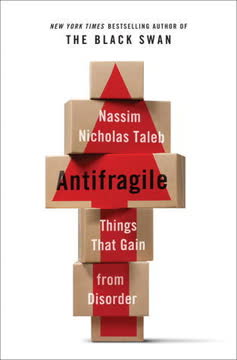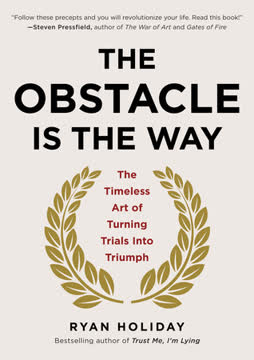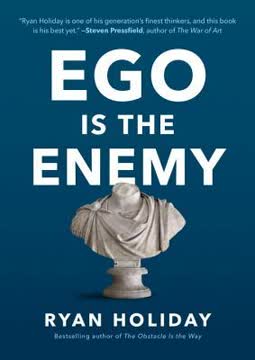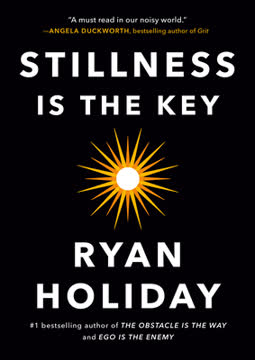重点摘要
1. 韧性是一种可以学习的技能,而非天生的特质
研究表明,韧性是正常的,并且涉及普通的技能和资源。
韧性的定义。 韧性是指在逆境、压力和挑战中适应和应对的能力。这并不是要避免困难的情绪或经历,而是要保持心理灵活性,并在挫折面前继续追求有价值的目标。
韧性的组成部分。 韧性的关键组成部分包括:
- 自我意识
- 情绪调节
- 乐观
- 解决问题的能力
- 强大的社会联系
- 目标感
培养韧性。 韧性可以通过以下方式培养:
- 练习正念和接纳
- 明确个人价值观
- 学习解决问题的技巧
- 建立社会支持网络
- 进行放松练习
- 挑战消极的思维模式
2. 正念和接纳是管理压力的关键
具有讽刺意味的是,当我们接受痛苦时,它似乎会自然减少,比起我们试图对抗自己的感受,这种方式更优雅和自然。
正念练习。 正念是指不带评判地关注当下。它通过以下方式帮助减轻压力:
- 增强对思想和情绪的觉察
- 减少反刍和担忧
- 增强情绪调节
- 改善注意力和集中力
接纳策略。 接纳并不意味着放弃,而是愿意体验思想和感受,而不试图改变或避免它们。这种方法:
- 减少与不适体验的斗争
- 允许情绪自然流动
- 释放出用于解决问题和有价值行动的心理能量
3. 明确个人价值观以指导决策和行动
韧性意味着在面对逆境时仍然坚持遵循个人价值观,包括痛苦和焦虑等不愉快的经历,并在承诺动摇时重新坚定信念。
识别价值观。 价值观是反映生活中最重要事物的指导原则。它们不同于目标,因为它们是持续的方向,而不是终点。例子包括:
- 诚信
- 同情
- 成长
- 创造力
- 连接
按照价值观生活。 将行动与个人价值观对齐:
- 提供目标感和意义
- 增加动机和承诺
- 在困难情况下增强决策能力
- 提高整体生活满意度
4. 解决问题的能力增强应对挑战的适应性
解决问题是一种公认的方法论,是一种认知行为疗法,研究表明它对广泛的问题有效。
解决问题的步骤:
- 明确问题
- 生成多个潜在解决方案
- 评估每个选项的优缺点
- 选择并实施最佳解决方案
- 审查结果并根据需要调整
有效解决问题的好处:
- 增强应对挑战的信心
- 减少压力和焦虑
- 改善决策能力
- 提高整体韧性和适应性
5. 社会支持和自信有助于情感韧性
韧性研究一致指出,拥有适当的社会支持来源,如朋友和家人的情感支持和鼓励等,至关重要。
建立社会支持。 强大的社会联系对韧性至关重要。增强社会支持的策略包括:
- 培养现有关系
- 加入有共同兴趣的团体或社区
- 参与志愿服务或社区活动
- 在需要时寻求专业支持
发展自信。 自信是指在尊重他人权利的同时,有效表达自己的需求、意见和感受。关键的自信技能包括:
- 使用“我”陈述
- 设定明确的界限
- 必要时说“不”
- 尊重地表达不同意见
- 请求你需要或想要的东西
6. 渐进性放松技术减少身体和心理紧张
从生理角度来看,放松是指肌肉放松,具体定义为完全没有任何收缩或紧张,即肌肉纤维的释放和延长。
渐进性肌肉放松(PMR)。 这种技术涉及系统地紧张和放松不同的肌肉群,以达到深度放松。好处包括:
- 减少身体紧张
- 减轻焦虑和压力
- 改善睡眠质量
- 增强身体意识
练习PMR:
- 找到一个舒适的位置
- 专注于特定的肌肉群
- 紧张肌肉5-10秒
- 释放紧张,专注于放松的感觉
- 移动到下一个肌肉群
- 在全身重复这个过程
7. 延迟担忧有助于更有效地管理焦虑
延迟担忧已与一些正念和接纳策略结合,特别是专注于当下和参与有内在价值的行动。
理解担忧。 担忧是集中于潜在未来负面结果的一系列思想。虽然一些担忧可能是有益的,但过度担忧通常会导致焦虑和压力。
实施延迟担忧:
- 识别担忧的思想
- 每天安排一个特定的“担忧时间”
- 当担忧在这个时间之外出现时,承认它们并推迟到指定的担忧时间
- 在担忧时间,建设性地处理问题或使用解决问题的技巧
延迟担忧的好处:
- 减少整体担忧时间
- 增加当下的觉察
- 改善对当前任务的专注
- 提高整体情感健康
8. 斯多葛哲学为建立韧性提供了永恒的智慧
那么,应该做什么呢?尽力做好我们能控制的事情,顺其自然地接受其余的事情。
斯多葛哲学的关键原则:
- 专注于你能控制的事情
- 接受无法改变的事情
- 培养美德和智慧
- 练习自律和节制
- 将挑战视为成长的机会
应用斯多葛智慧:
- 使用理性思维挑战无益的信念
- 练习负面可视化以珍惜你所拥有的
- 反思你的行为并从经验中学习
- 培养超越个人欲望的责任感和目标感
- 在逆境中培养情感平静
最后更新日期:
FAQ
What is "Build Your Resilience" by Donald J. Robertson about?
- Focus on psychological resilience: The book explores how ordinary people can adapt and cope well with adversity by developing skills like problem-solving, emotional regulation, and social competence.
- Integrative approach: Donald J. Robertson combines evidence-based cognitive-behavioural therapy (CBT) with modern mindfulness and acceptance-based therapies, especially Acceptance and Commitment Therapy (ACT).
- Practical self-help guide: Readers are provided with a step-by-step plan to build resilience, emphasizing values clarification, acceptance, mindfulness, relaxation, and social skills for thriving in any situation.
Why should I read "Build Your Resilience" by Donald J. Robertson?
- Preventative and general wellbeing: The book aims to enhance resilience for both current and future adversities, improving overall quality of life rather than just fixing specific problems.
- Evidence-based strategies: It draws on well-researched psychological therapies, including CBT, ACT, and relaxation training, ensuring scientifically supported advice.
- Holistic and accessible: Robertson integrates ancient Stoic philosophy with modern psychology, making the content practical and relevant for everyday challenges.
What are the key takeaways and focus points from "Build Your Resilience" by Donald J. Robertson?
- Skill acquisition and practice: Building resilience is likened to learning a physical skill, requiring systematic practice of techniques like Progressive and Applied Relaxation, worry postponement, and assertiveness.
- Mindfulness and acceptance: Central themes include accepting internal experiences, practicing cognitive defusion, and cultivating present-moment awareness to reduce unhelpful emotional reactions.
- Philosophical integration: Stoicism is presented as a timeless framework, emphasizing control over actions, acceptance of external events, and living in accordance with personal values.
How does Donald J. Robertson define psychological resilience in "Build Your Resilience"?
- Positive adaptation: Resilience is described as “patterns of positive adaptation during or following significant adversity,” relying on everyday skills like problem-solving and emotional regulation.
- Commitment to values: Robertson frames resilience as the ability to remain committed to one’s core values despite setbacks, rather than simply eliminating distress.
- Dynamic process: Resilience is seen as an ongoing, flexible process of coping well and bouncing back, not about being perfect or emotion-free.
What are the main risk and protective factors for resilience according to "Build Your Resilience"?
- Risk factors: These include childhood developmental issues, daily hassles, major setbacks (like bereavement or illness), and the stress of seeking greater meaning or purpose.
- Protective factors: Social support from family, friends, and community is highlighted as the most consistent protective factor, along with self-acceptance, confidence, and emotional regulation.
- Experiential avoidance: Attempts to control or avoid unpleasant internal experiences often backfire, increasing distress and reducing resilience.
What is experiential avoidance and why is it important in "Build Your Resilience" by Donald J. Robertson?
- Definition: Experiential avoidance is the unhelpful effort to suppress, control, or avoid unpleasant thoughts, feelings, or memories—a core concept in ACT.
- Counterproductive effects: Trying to avoid or control internal experiences often worsens emotional suffering and interferes with living according to values.
- Creative hopelessness: The book encourages letting go of futile control efforts and instead cultivating psychological flexibility through mindful acceptance and valued action.
How does "Build Your Resilience" by Donald J. Robertson explain values clarification and its role in resilience?
- Values as life directions: Values are described as ongoing, intrinsic life directions (e.g., “acting with integrity”) that guide actions, not just specific goals.
- Distinction from goals: Values provide meaning and motivation, while goals are specific, achievable outcomes that serve those values.
- Foundation for resilience: Clarifying values helps define what resilience means personally and motivates individuals to face emotional challenges.
What does "Build Your Resilience" by Donald J. Robertson say about commitment to valued action?
- Central to resilience: Acting according to core values despite internal barriers is presented as the essence of emotional resilience.
- Goal-setting and planning: The book recommends setting SMART goals (Specific, Measurable, Achievable, Relevant, Time-limited) aligned with values and scheduling value-driven activities.
- Overcoming barriers: It distinguishes between external (practical) and internal (psychological) barriers, suggesting problem-solving for the former and mindfulness/acceptance for the latter.
What are acceptance and cognitive defusion, and how do they contribute to resilience in "Build Your Resilience"?
- Acceptance: Willingness to fully experience unpleasant thoughts and feelings without struggling against them, in service of valued living.
- Cognitive defusion: Techniques for seeing thoughts as mental events rather than literal truths, reducing their emotional impact (e.g., labeling thoughts, imagining them as leaves on a stream).
- Psychological flexibility: Together, acceptance and defusion foster an “open” response style, increasing flexibility and enabling value-driven action despite internal challenges.
How does "Build Your Resilience" by Donald J. Robertson describe mindfulness and its role in resilience?
- Mindfulness as ‘centred’ responding: Mindfulness involves present-moment awareness and adopting the perspective of self-as-observer, complementing acceptance and defusion.
- Reducing rumination and worry: Mindfulness helps limit unproductive rumination about the past and worry about the future, common in anxiety and depression.
- Practical exercises: The book includes mindfulness practices like mindful eating, body scans, and brief meditations to cultivate awareness and flexibility in daily life.
What is Progressive Relaxation and how is it used in "Build Your Resilience" by Donald J. Robertson?
- Scientific muscle relaxation: Progressive Relaxation (PR) involves systematically tensing and releasing muscle groups to achieve deep relaxation and reduce residual tension.
- Stepwise training: The book outlines a five-week program, starting with seven muscle groups and progressing to fewer groups and relaxation by recall, making the practice efficient and effective.
- Resilience benefits: PR reduces physical and mental tension, improves stress tolerance, and complements mindfulness and acceptance strategies.
How does "Build Your Resilience" by Donald J. Robertson integrate Stoicism into modern resilience-building?
- Philosophical origins: Stoicism, an ancient philosophy, teaches distinguishing what is within our control from what is not, influencing modern CBT and resilience methods.
- Core principles: The Stoics advocated focusing on one’s own actions and intentions, accepting external outcomes with equanimity, and living in accordance with Nature.
- Practical exercises: The book introduces Stoic practices like the “reserve clause,” the “View from Above,” and contemplating the ideal Sage to foster perspective, acceptance, and value-driven living.
评论
《培养你的韧性》获得了大多数正面评价,读者称赞其实用的方法和基于证据的策略。许多人欣赏这本书以斯多葛主义和现代治疗技术如接受与承诺疗法(ACT)为基础。评论者认为这本书内容丰富,充满了有用的练习,尽管有些人指出其学术语调可能对普通读者来说有些挑战。这本书因其专注于自我接纳和通过个人价值观和目标来建立韧性而受到赞誉。一些读者觉得内容密集但有收获,而另一些人则认为它重复了其他自助书籍中的概念。
Similar Books



















